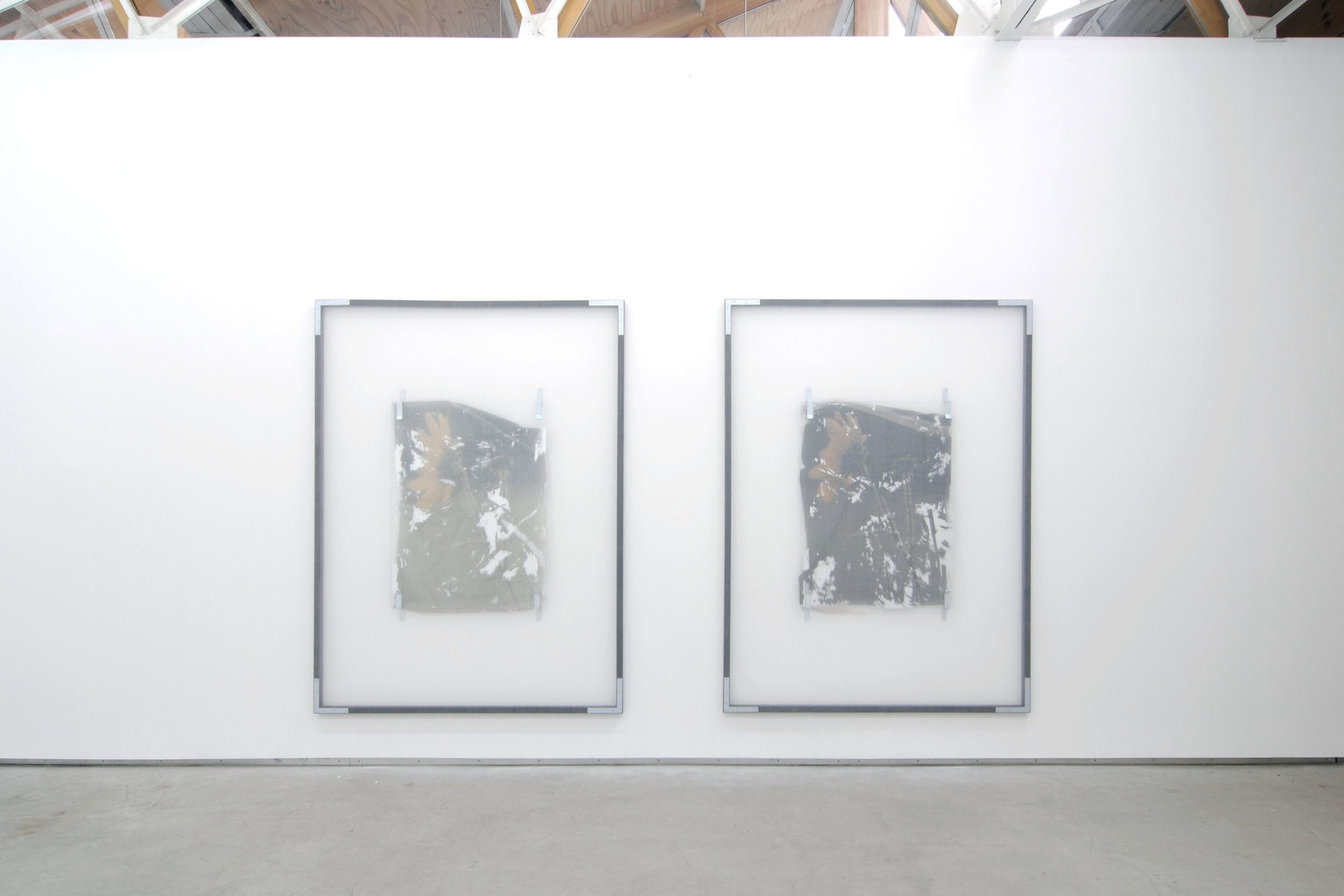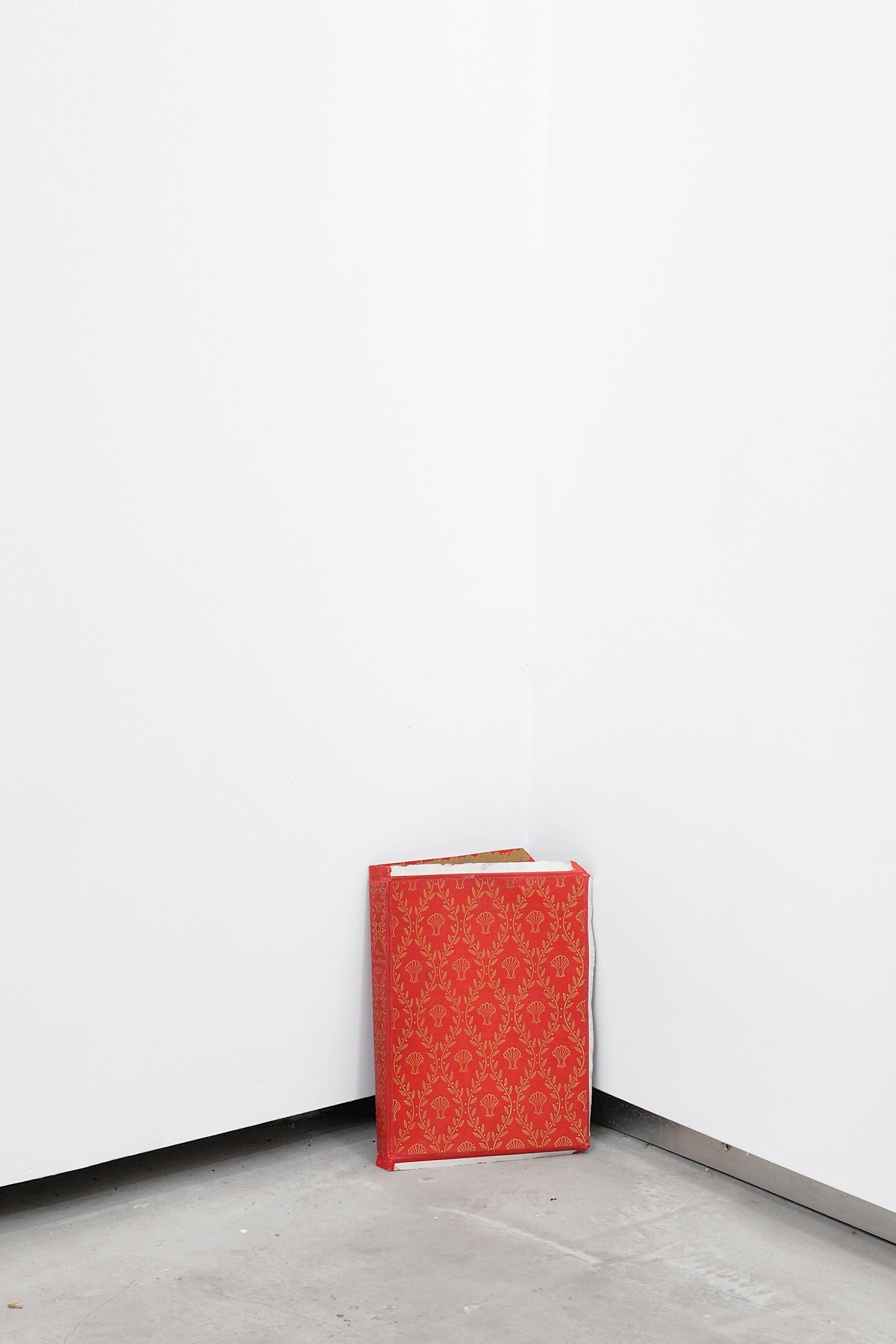Valerie Snobeck: Use Period
22 October–21 December 2013, Brussels
Valerie Snobeck, Go Down (Deep Fold), 2013, peeled print and burlap on plastic, 149 x 97 cm
It’s not reality but the subject that dissolves, the very capacity to “mirror” things, to be separate from the world like someone looking at a reflection in a mirror – removed from it by an ontological sheath of reflective glass (Morton, 2013, p.35)
Thin layers of unassuming material bear the traces of a book cover, its faded red and golden leaf and scallop tessellation still visible. Across the walls, sheets of plastic laminate depict photos of snorkelers resurfacing, of sunflowers, sea life and cracked walls. Images emerge from behind mirrors that have had their metals and paint partially removed with razor blades and acid, and from within glass assemblages held away from the walls by door barricade brackets. The borders round the images are imprints and particles of composite wood board and burlap, becoming part of the image itself. Wood structures are stained black with permanent marker and covered with remnants of a construction site’s evidence of growth or, a reconstruction of existing structures.
Images are sourced from the Documerica project commissioned by the Environmental Protection Agency in the 1970's to document the changing state of our environment. The book cover is from ‘The Scallop: Studies of a Shell and its Influences on Humankind’ published in 1957 and gifted to shareholders at Shell Oil Company. Outside Valerie Snobeck’s studio window a petrol station stands in full view.
Man does not meet a new word
As surface gives way to suggestion, connections are simply implied. The snorkeler is a Shell Oil Company scientist rising to the surface after studying coral reef formations and the stream contains excess turned waste from a glass company. The photographers in Documerica occasionally turned their cameras towards flowers, some are those that grow along Alaskan oil pipelines or next to polluted rivers while others are neutral in their captions segmented into categories of effect.
The images though reproduced are not duplicate. Thin plastic is heated and vacuumed to a print and then peeled away from the surface in an inversion of a means for mass production. The plastic is peeled away from the paper substrate along with some of the ink and paper and in the force of doing so are occasionally torn and repaired. They contain partial ink from the printed image and paper deposits unique to each peel. In the unpredictability of the process, there is a renewed uniqueness and an unknown result. Permanence is hinted at via the use of ‘permanent’ marker on the frames whilst the potential weight of the subject is countered by the peeled image’s almost weightless quality.
“Man does not meet a new word every time he invents or meets a new thing; it is often handier to use a familiar word, giving it a slight twist in meaning: electric bulb, dust bowl, air hostess” reads an excerpt from The Scallop (Cox, 1957, p.11). In its early days, the men behind the book traded actual seashells. In another age, when references to the sea were welcomed and symbols weren’t ubiquitous.
Material, method, concept. In Snobeck’s practice one is not vehicle for another but all intertwine. References are at once disparate and associative; pollution, plastic, permanence, debris netting, love, sex, oil, paper, depressions, recessions, formed out of partials and the excesses of production.























